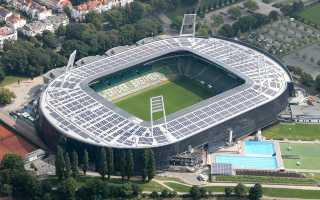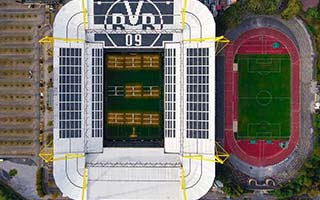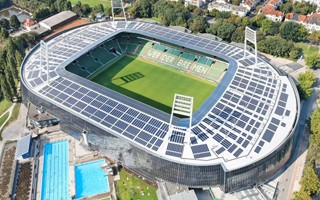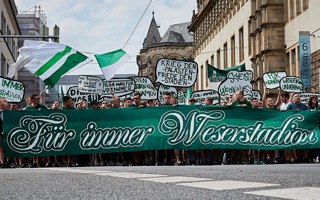Wohninvest Weserstadion
| Capacity | 42 100 |
|---|---|
| 37,441 (International capacity) | |
| 1520 (VIP seats) | |
| 80 (Press seats) | |
| 127 (Disabled seats) | |
| Country | Germany |
| City | Bremen |
| Clubs | SV Werder Bremen |
| Other names | Bremer Kampfbahn (1934-1937), IKE-Stadion (1945-1947) |
| Floodlights | 2000 lux |
| Inauguration | 1909 |
| Renovation | 1926, 1947, 1963-1965, 1978, 1989, 1992, 1997, 2005, 2009-2011 |
| Address | Auf dem Peterswerder, 28205 Bremen |
Advertisement
Wohninvest Weserstadion – stadium description
Sports have been played here since 1909. However it wasn’t until 1926 that the ground received its first grandstand. Then in 1930’s the name Weserstadion became common due to proximity of Weser river. Around the same time Werder Bremen and less known Bremer SV started using the venue, with first one becoming permanent tenants and the latter moving out in 1963.
WWII period was unstable for both naming and use of the ground. In 1934 the Nazis renamed it to Bremer Kampfbahn and it became political rally spot. Then came bombardment and reconstruction after WWII. This time, however, it was used mostly for American sports and between 1945-1947 called IKE-Stadion. Then Weserstadion became prevalent once again and so it stayed.
First lighting system was installed in 1963 along with capacity increase. Another expansion came in 1965, but those were the last such works for decades. Along with standard improvements, capacity started falling in 1970’s and stopped at some 35,000 in late 1990’s – mostly due to conversion or terracing into seating. Current floodlight masts, very distinctive if not iconic, came in 1978, giving Weserstadion the most powerful lighting in Europe. In 1992 it became Germany’s first ground to have skyboxes, receiving further commercial and office space in 1997’s redevelopment of the East stand.
Capacity went up again in 2002 when athletics track was dismantled, pitch lowered and temporary seating placed in the gap, bringing fans closer to the action. A further change to 50,000 was planned for 2008, but ambitious plans had to be reduced. And so a complex revamp was carried out in 2009-2011, but capacity stayed almost unchanged. The stadium did change a lot, though. Two end stands were rebuilt, this time making Weserstadion a proper rectangular football ground without curves. Completely new roof and outer shell came along, both loaded with photovoltaic panels that allow the stadium to supply its own energy.
How Weserstadion compares to other Bundesliga stadiums?
Advertisement
Pictures
-
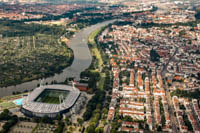
08.08.2012 © Bin im Garten (CC BY 4.0) 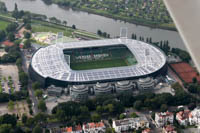
08.08.2012 © Bin im Garten (CC BY 4.0) 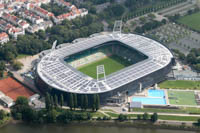
08.08.2012 © Bin im Garten (CC BY 4.0) 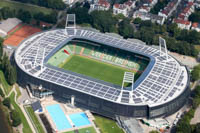
08.08.2012 © Bin im Garten (CC BY 4.0) 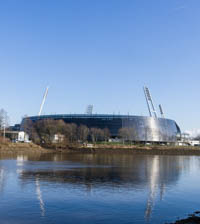
06.02.2015 © Matthias Süßen (CC BY-SA 3.0) 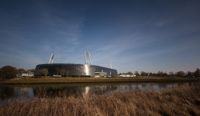
09.03.2014 © Marc vdV 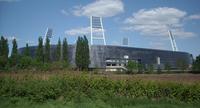
11.05.2011 © copyright-free 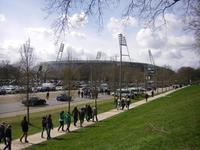
31.03.2012 © Stephan Hoogerwaard 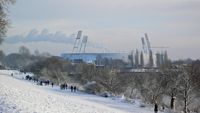
18.12.2010 © Joerg Reichel 
06.04.2012 © Benjamin Radzun (cc: by-sa) 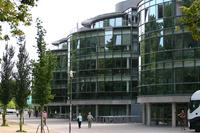
20.08.2010 © Sebastian Napierkowski 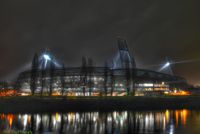
28.11.2012 © Marc Krug 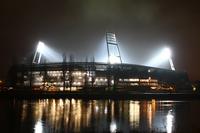
28.11.2012 © Marc Krug 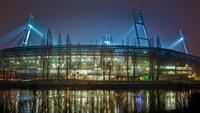
28.01.2012 © Jonas Ginter (cc: by-nc-nd) 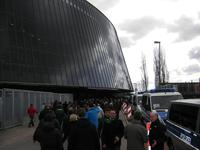
31.03.2012 © Stephan Hoogerwaard 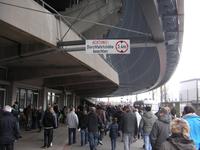
31.03.2012 © Stephan Hoogerwaard 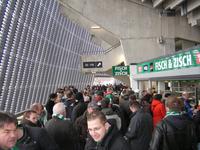
31.03.2012 © Stephan Hoogerwaard 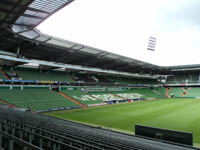
30.07.2015 © Detlefrueter (CC BY-SA 4.0) 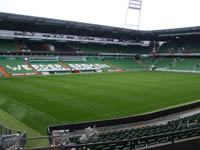
03.08.2011 © Paul 14 (CC BY-SA 3.0) 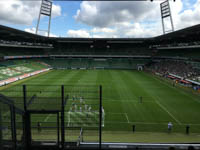
31.07.2016 © Leon Thiel (CC BY-SA 4.0) 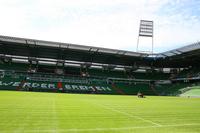
20.08.2010 © Sebastian Napierkowski 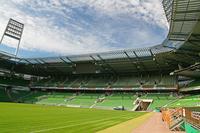
20.08.2010 © Sebastian Napierkowski 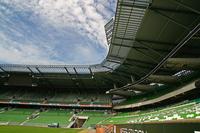
20.08.2010 © Sebastian Napierkowski 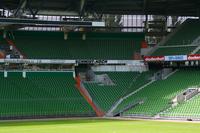
20.08.2010 © Sebastian Napierkowski 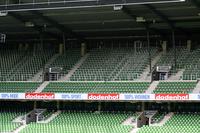
20.08.2010 © Sebastian Napierkowski 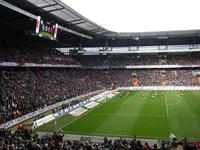
31.03.2012 © Stephan Hoogerwaard 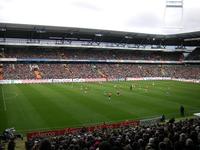
31.03.2012 © Stephan Hoogerwaard 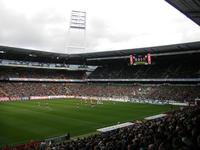
31.03.2012 © Stephan Hoogerwaard 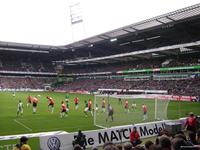
31.03.2012 © Stephan Hoogerwaard 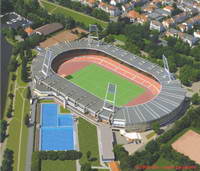
31.03.2012 © Stephan Hoogerwaard 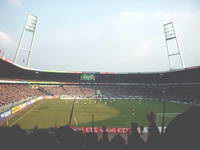
28.02.2004 © frank-jasperneite.de 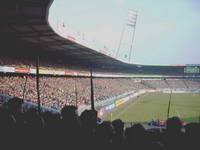
28.02.2004 © frank-jasperneite.de 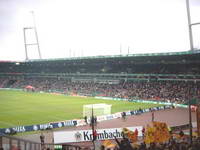
27.11.2004 © frank-jasperneite.de 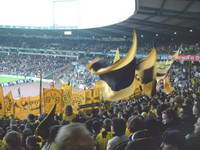
27.11.2004 © frank-jasperneite.de 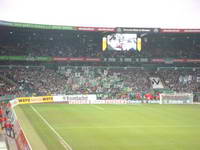
27.11.2004 © frank-jasperneite.de
Zdjęcia sprzed przebudowy 2009-2011:
Related news
2023
2022
2021
2020
2019
2017
-

Euro 2024: Germany confirms 10 candidate stadiums
On Friday the German football association confirmed the selection of 10 host cities and stadia for Euro 2024. No new construction and few major renovations are planned.
-
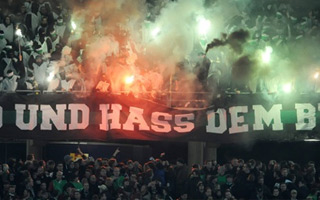
Hannover: Surprise declaration in favour of legal pyrotechnics
If there's one person you would expect to be sceptical of pyro, it's a minister of interior. But it's exactly his announcement in favour of legal flares that sparked new heated discussion in Germany.
2015
-
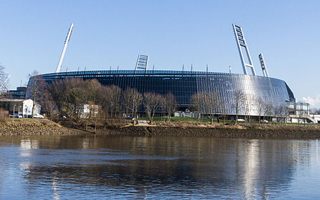
Bremen: Stadium to finance anti-flood embankments
Weser-Stadion operator will cover most of the price tag for upgraded embankments protecting it from flooding.
-
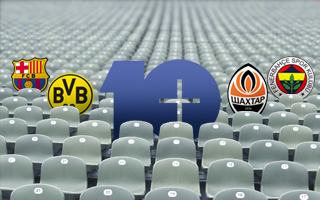
10+ Ranking 2015: Attendances in Europe (Part 2. The Clubs)
Borussia, Barca and Man United – lovely dominant trio. But it wasn’t them who gained most fans last season. Check all 217 clubs that draw an average crowd of 10,000+!
-

10+ Ranking 2015: Attendances in Europe (Part 1. The Leagues)
Numbers don’t lie: French Ligue 1 outgrew Italian Serie A as Europe’s fourth largest league. Premier League seems unlikely to catch up to Bundesliga, while Turkey, Ukraine and Scotland are down.
-
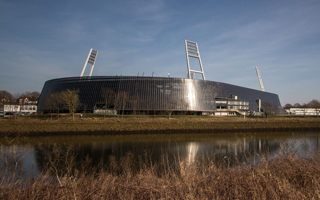
Bremen: Weserstadion needs flood protection
Its picturesque location comes at a price. Weserstadion is under threat of drowning in Weser River waters should flood come. But who should pay for protective embankments?
2014
2012
-
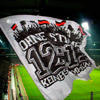
Germany: Controversial safety regulations approved, what now?
Yesterday 36 top clubs voted on proposed safety regulation changes with vast majority in favour. Many fans see this as clamp-down on fan culture, but others are encouraged by events of past few weeks. What's changing inside German stadia?
-

Germany: Fans don’t feel safe?
Temperature around German football safety has been growing for months and is almost as hot as the flares set off by fans inside stadiums. Flares much hated by football governing bodies who suggested a new safety system, claiming people don’t feel safe at football games. They only forgot to ask the people, whether this is the case…
 StadiumDB
StadiumDB